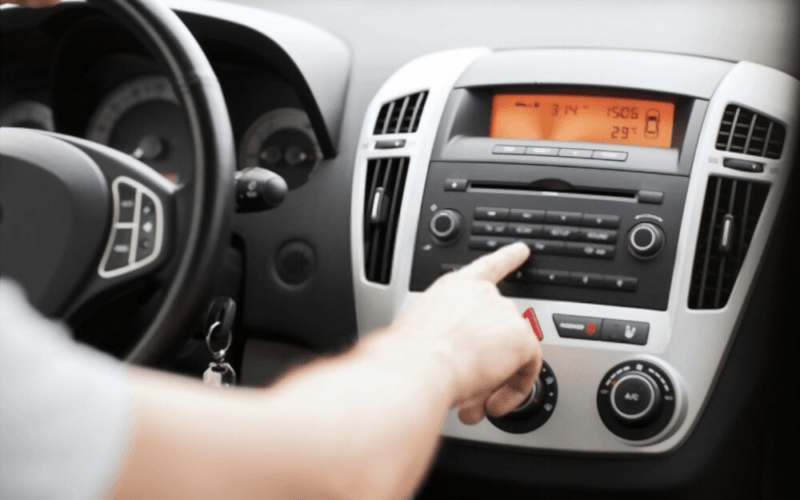
Car audio is an essential component of any vehicle, as it provides entertainment and can even enhance the overall driving experience. However, with so many options available, choosing the right car audio system for your needs can be a daunting task. In this comprehensive guide, we will explore the various aspects of car audio systems, including the main components, factors to consider when making a purchase, and tips for installation. By the end of this article, you’ll have the knowledge and confidence to select the perfect car audio system for your vehicle.
Understanding Car Audio System Components
Before diving into the specifics of selecting a car audio system, it’s essential to understand the main components that make up these systems.
1. Head Unit
The head unit, also known as the car stereo or receiver, is the central control unit for your car audio system. It’s responsible for receiving audio signals from various sources (radio, CD, MP3, etc.) and sending them to the speakers. When choosing a head unit, consider features such as Bluetooth connectivity, touchscreen display, and compatibility with your smartphone.
2. Speakers
Car speakers are responsible for producing sound in your vehicle. They come in various sizes, shapes, and types, including coaxial speakers (which combine multiple drivers in one unit) and component speakers (which separate the drivers for more precise sound quality). When selecting car speakers, consider factors such as power handling, sensitivity, and frequency response.
3. Amplifiers
A car amplifier boosts the audio signal from your head unit to your speakers, providing more power and better sound quality. Amplifiers come in various sizes and configurations, with some designed specifically for certain types of speakers or subwoofers. When choosing an amplifier, consider factors such as power output, the number of channels, and compatibility with your head unit and speakers.
4. Subwoofers
Subwoofers are specialized speakers designed to reproduce low-frequency sounds, adding depth and bass to your car audio system. They come in various sizes and types, with some requiring a separate enclosure for optimal performance. When selecting a subwoofer, consider factors such as power handling, sensitivity, and the type of enclosure required.

Factors to Consider When Choosing a Car Audio System
Now that you have a basic understanding of the main components of a car audio system, let’s explore the factors you should consider when making your selection
1. Sound Quality
Sound quality is a subjective factor that depends on personal preferences. However, some general guidelines can help you make an informed decision. Look for speakers with wide-frequency responses, as this will ensure they can reproduce a broad range of sounds accurately. Additionally, consider the sensitivity of the speakers, as this will impact how efficiently they can convert power into sound.
2. Speaker Size
The size of your car speakers will directly impact the sound quality and volume capabilities of your car audio system. Larger speakers generally produce better sound quality and can handle more power, but they may also require more space for installation. Consider the dimensions of your car’s interior and the available space for speaker installation when selecting speaker size.
3. Compatibility
Ensuring that all components of your car audio system are compatible is crucial for optimal performance. This includes compatibility between the head unit and speakers, as well as the amplifier and subwoofer. Check the specifications of each component to ensure they are designed to work together and can handle the power requirements of your system.
4. Budget
Car audio systems can range dramatically in price, so it’s essential to establish a budget before making your selection. Keep in mind that more expensive systems may offer better sound quality and features, but there are also plenty of budget-friendly options that can still provide a significant improvement over your factory-installed system.
Installation Tips and Tricks
Once you’ve chosen the perfect car audio system for your needs, it’s time to tackle the installation process. Here are some tips and tricks to ensure a smooth and successful installation:
- Read the manufacturer’s instructions carefully and gather all necessary tools and materials before beginning.
- Disconnect the car battery to prevent any accidental electrical damage during installation.
- Take your time and be patient, as rushing the installation process can lead to mistakes and potential damage to your vehicle or audio components.
- If you’re not confident in your ability to install the system yourself, consider hiring a professional to ensure a proper and safe installation.
Conclusion
Selecting the right car audio system for your vehicle may seem like a daunting task, but by understanding the main components, considering essential factors such as sound quality and compatibility, and following proper installation guidelines, you can confidently choose the perfect system for your needs.
Whether you’re looking for a simple upgrade to your factory-installed system or a complete audio overhaul, investing in a quality car audio system can significantly enhance your driving experience and provide endless hours of entertainment on the road.





